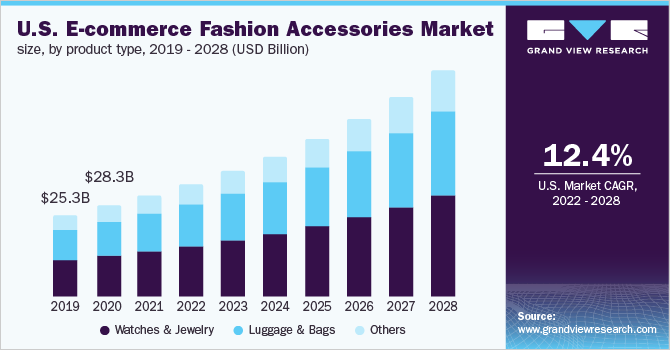Ecommerce has become a popular way for businesses to sell their products and services online. However, with so many competitors in the market, it can be challenging to stand out and increase ecommerce sales. In this article, we’ll explore some tips and strategies to help you optimize your e-commerce site. How you can improve your marketing efforts, and ultimately boost your ecommerce sales. This can be applicable to any Ecommerce store- Jewelry Store, Luxury Bags or day to day items.
Optimize your website for speed and user experience
One of the most important factors in ecommerce store success is website speed and user experience. Slow loading times and a clunky interface can turn potential customers away and hurt your sales. To optimize your website for speed, consider using a content delivery network (CDN) to distribute your content across multiple servers, compressing images and files, and minimizing the use of plugins and scripts. Additionally, make sure your website is easy to navigate and has a clear call-to-action for customers to make a purchase.
In addition to website speed, user experience is also crucial for e-commerce success. Make sure your website is easy to navigate, with clear categories and search functionality. Use high-quality images and product descriptions to help customers make informed purchasing decisions. And don’t forget about mobile optimization – with more and more people shopping on their phones, it’s important to ensure your website is mobile-friendly. It has to be easy to use on smaller screens. By optimizing your website for speed and user experience, you can improve your chances of converting visitors into customers and growing your e-commerce business.
Improving the Website Speed
One of the most important factors in e-commerce success is website speed. Slow loading times can lead to frustrated customers and lost sales. To optimize your website for speed, make sure to compress images and minimize the use of plugins and scripts. You can also use a content delivery network (CDN) to improve load times for customers in different geographic locations. Additionally, focus on user experience by making sure your website is easy to navigate and search.
Use clear categories and product descriptions to help customers find what they’re looking for, and consider implementing features like live chat or customer reviews to improve engagement. Finally, don’t forget about mobile optimization – with more and more people shopping on their phones, it’s essential to ensure your website is mobile-friendly and easy to use on smaller screens. By prioritizing website speed and user experience, you can create a seamless shopping experience for your customers and drive ecommerce store success.
Use social media to promote your ecommerce products
Social media has become one of the most effective marketing tools for businesses, especially eCommerce store sellers. By utilizing social media platforms like Facebook, Instagram, and Twitter, you can create a highly-visible online presence that enables you to promote your products and engage with customers. With billions of active users worldwide, social media offers an unparalleled opportunity to reach a massive audience and increase eCommerce store sales.
To get started promoting your products on social media, it is essential to understand your target audience’s behavior and preferences. This knowledge will help you craft compelling content that resonates with them. It is also crucial to have a consistent brand message across all platforms to establish trust and credibility with potential customers. Posting high-quality product photos/videos along with attractive descriptions can spark interest in your followers and encourage them to make purchases.
Engaging with your followers on social media is equally important as promoting your products. For Ecommerce sales like Jewellery, you would need to leverage more of TikTok and Instagrams. For Products targeting Businesses and working professionals, Linkedin might work.
Offer free shipping and other incentives to encourage purchases
In the world of ecommerce sales, offering free shipping and other incentives has become increasingly important to encourage customers to make purchases. With so many options available online, customers are often swayed by extra perks and benefits that come with their purchase. By offering free shipping, retailers can not only increase their conversion rates but also build customer loyalty.
One major benefit of offering free shipping is that it eliminates any hesitations a customer may have about making a purchase due to high shipping costs. Many studies have shown that customers are more likely to complete a purchase when they see free shipping as an option. Additionally, by including other incentives such as discounts or free gifts with a purchase, retailers can entice customers even further.
Another advantage of offering incentives is the potential for increased word-of-mouth marketing. Customers who receive excellent service and added benefits are more likely to recommend the retailer to others.
However, it’s important to make sure that you can afford to offer free shipping without hurting your profit margins. You may need to adjust your prices or find other ways to cut costs in order to make free shipping feasible. Additionally, you can offer other incentives to encourage purchases, such as discounts on future purchases or free gifts with certain orders. These incentives not only help boost sales, but they also help build customer loyalty and increase the likelihood of repeat business. You can partner with third party providers for Dropshipping.
Use email marketing to keep customers informed and engaged
Email marketing is a powerful tool for e-commerce businesses. By sending regular newsletters and promotional emails, you can keep your customers informed about new products, sales, and other updates. You can also use email marketing to segment your audience and send targeted messages to specific groups of customers. For example, you could send a special offer to customers who haven’t made a purchase in a while, or a personalized recommendation based on their past purchases.
Just be sure to follow best practices for email marketing, such as avoiding spammy language and making it easy for customers to unsubscribe if they no longer want to receive your emails.
In addition to keeping customers informed and engaged, email marketing can also help drive sales. According to a study by the Direct Marketing Association, email marketing has an average ROI of 122%, which is four times higher than other marketing channels like social media and direct mail.
By including clear calls to action in your emails and making it easy for customers to make a purchase, you can increase conversions and boost your bottom line. So if you’re not already using email marketing as part of your e-commerce strategy, now is the time to start.
Ecommerce Sales in Jewelry
As the world continues to shift towards a more digital landscape, eCommerce has become a key player in the success of businesses. This is especially true for jewelry stores, as online sales have become an essential part of their operations. With eCommerce sales on the rise, jewelry retailers can no longer afford to ignore this channel if they want to stay competitive.
One of the main advantages of eCommerce sales for jewelry stores is that it allows them to reach a wider audience. By selling online, these retailers are able to expand beyond their local market and tap into customers from all over the world. Additionally, eCommerce provides greater convenience for customers who may not have time to visit a physical store or prefer shopping from the comfort of their own homes.
Another benefit of eCommerce sales for jewelry stores is that it can help boost revenue. Many Jewelry Stores are investing in Branding and Social media for brand presence. With the advent of Shopify, Amazon and Other leading marketplaces, ecommerce sales can grow well for new startups in Jewellery space.
Ecommerce jobs available
Ecommerce jobs are becoming increasingly popular in today’s digital world. The growth of online shopping has led to a surge in demand for professionals who can help businesses sell their products and services on the internet. These jobs offer opportunities to work with cutting-edge technologies, manage complex systems, and collaborate with teams from different parts of the world.
There are many types of ecommerce jobs available in the market. Some of the most sought-after positions include web developers, UX designers, digital marketers, content writers, and customer service representatives. Each role requires a unique set of skills and expertise that can help companies achieve their goals and reach more customers.
If you’re interested in pursuing a career in ecommerce, there are plenty of resources available to help you get started. You can take online courses or attend workshops to learn about specific skills such as coding or SEO optimization. More companies are hiring Ecommerce executives, backoffice executives., data admins, marketing executives.
Dropshipping in Ecommerce
Dropshipping has become an increasingly popular business model for ecommerce stores in recent years. This method of retail allows store owners to sell products without ever having to physically handle or store inventory. Instead, the products are shipped directly from the supplier to the customer.
One of the biggest advantages of dropshipping is that it eliminates many of the traditional costs associated with running a physical retail location. Store owners don’t have to worry about rent, utilities, or other overhead expenses that come with a brick and mortar store. Additionally, since there’s no need to purchase inventory upfront, dropshippers can start their business with very little investment.
Another benefit is that dropshipping allows for greater flexibility in terms of product offerings. Since there’s no need to purchase large quantities of inventory upfront, it’s easy for store owners to test out different products and see what sells best without committing too much money upfront.
Final Thoughts
In conclusion, ecommerce businesses can benefit from boosting sales with less effort. By implementing these five strategies, businesses can optimize their website for a better user experience, create timely campaigns and ads, leverage the power of social media, build customer relationships through email marketing, and focus on SEO to improve visibility. With proactive planning and optimization efforts, ecommerce businesses can capitalize on digital strategies to increase sales with minimal investment of time and resources. As a result, businesses will be able to maximize profits while keeping costs low.





